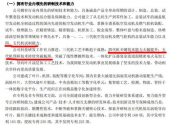Like WS-10 & WS-15, the figures (thrust & bypass ratio) for WS-20 have kept changing over the long course of development. 1) The original WS-20 was based on the SF-A engine targeted for C919, which had a rather conservative figures of 120KN~130KN & 5:1; 2) later WS-18 was successfully developed and its figures were pretty close to those of WS-20, rendering the original figures rather pointless so they had to be raised to 160KN & 6:1; 3) finally it is said that the planned upgraded version of WS-20 will target 180KN & 8:1.
How credible are these figures? 1) is pretty credible because the figures were displayed in shows way back when. 2) is logically reasonable and feasible although the evidence has been fuzzy. 3) is largely based on some circumferential evidence (papers & pictures) and inference. It requires a bit of leap of faith.
In any case, this is PLA watching. At high-level, the development and trend make a lot of sense, but don't take these exact figures religious.

